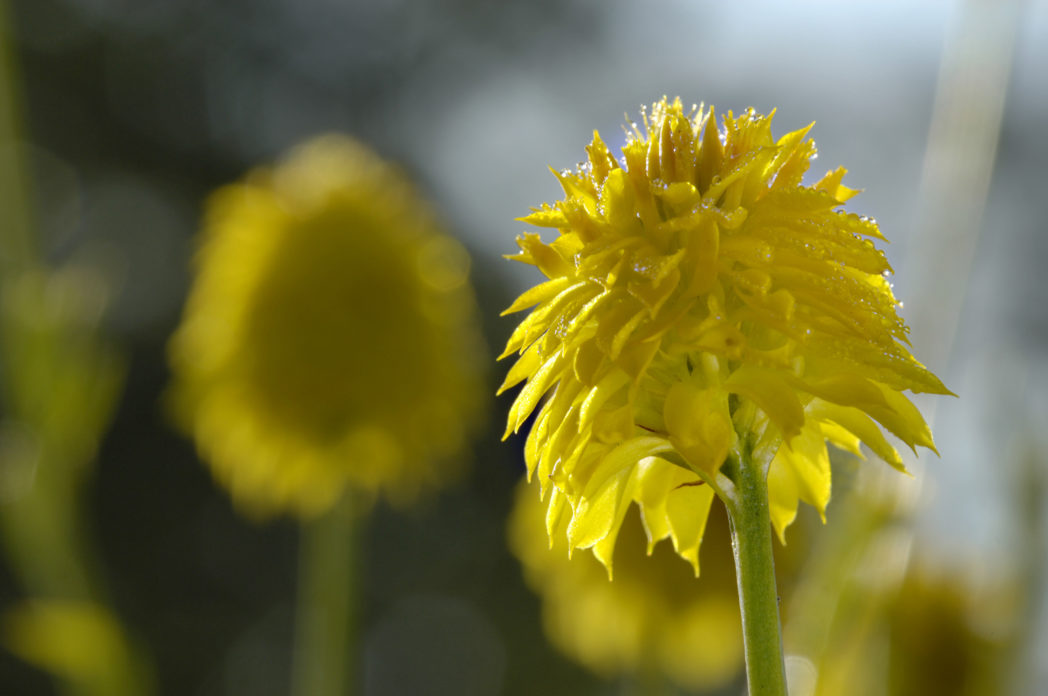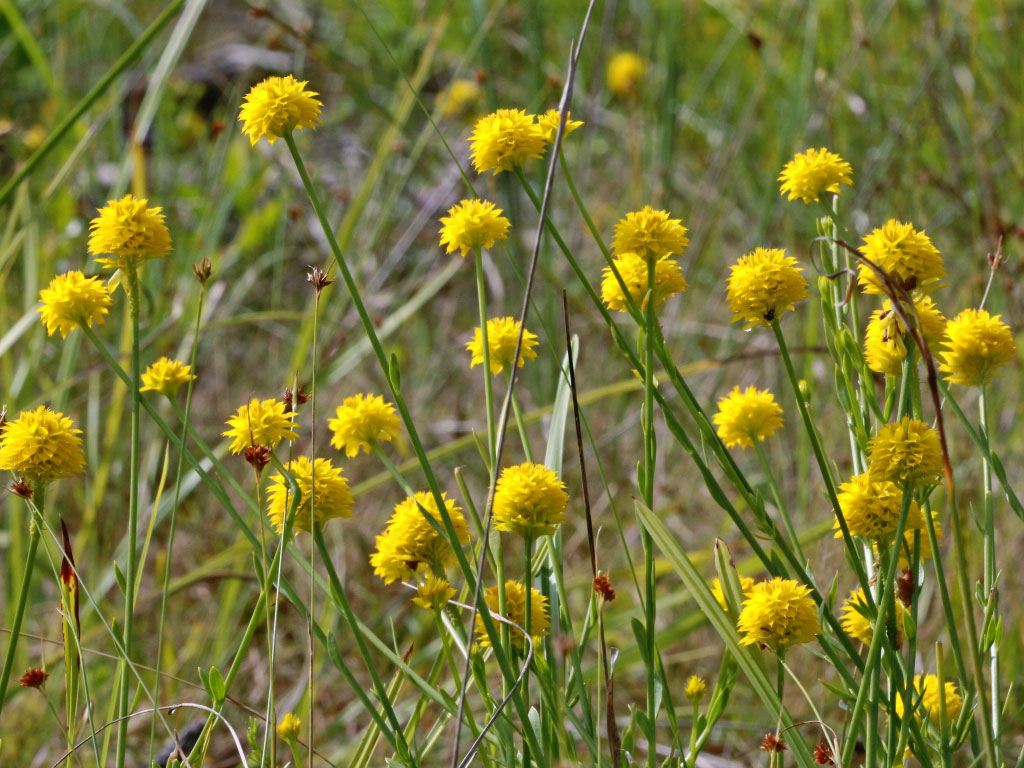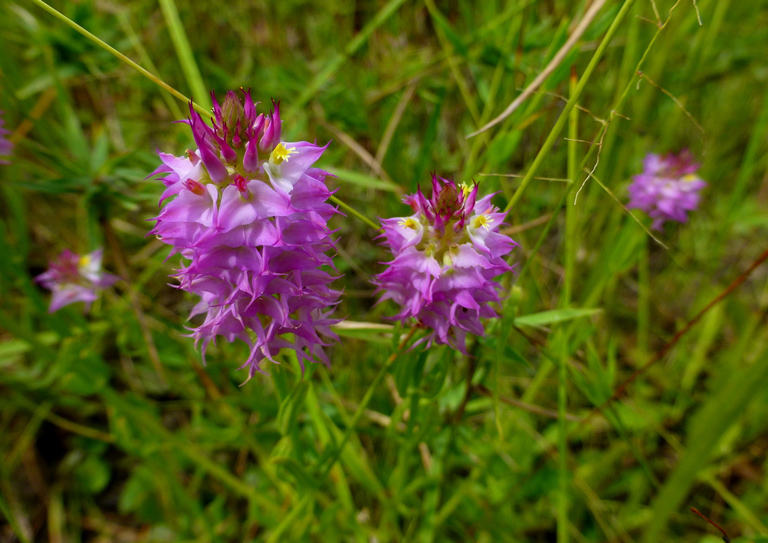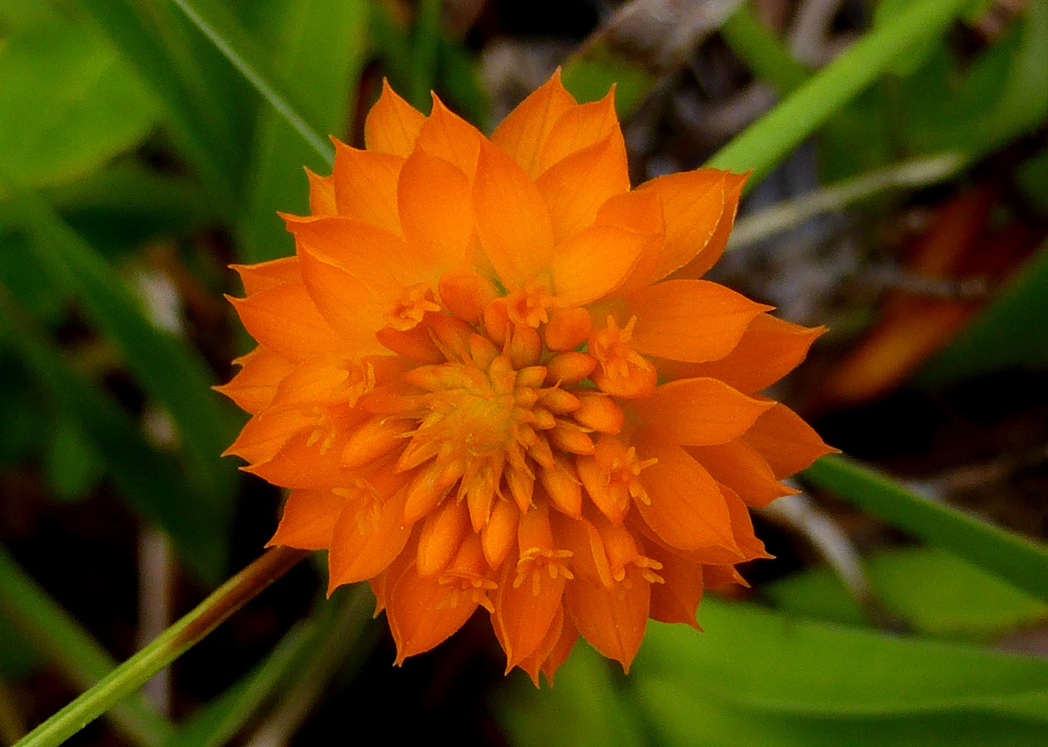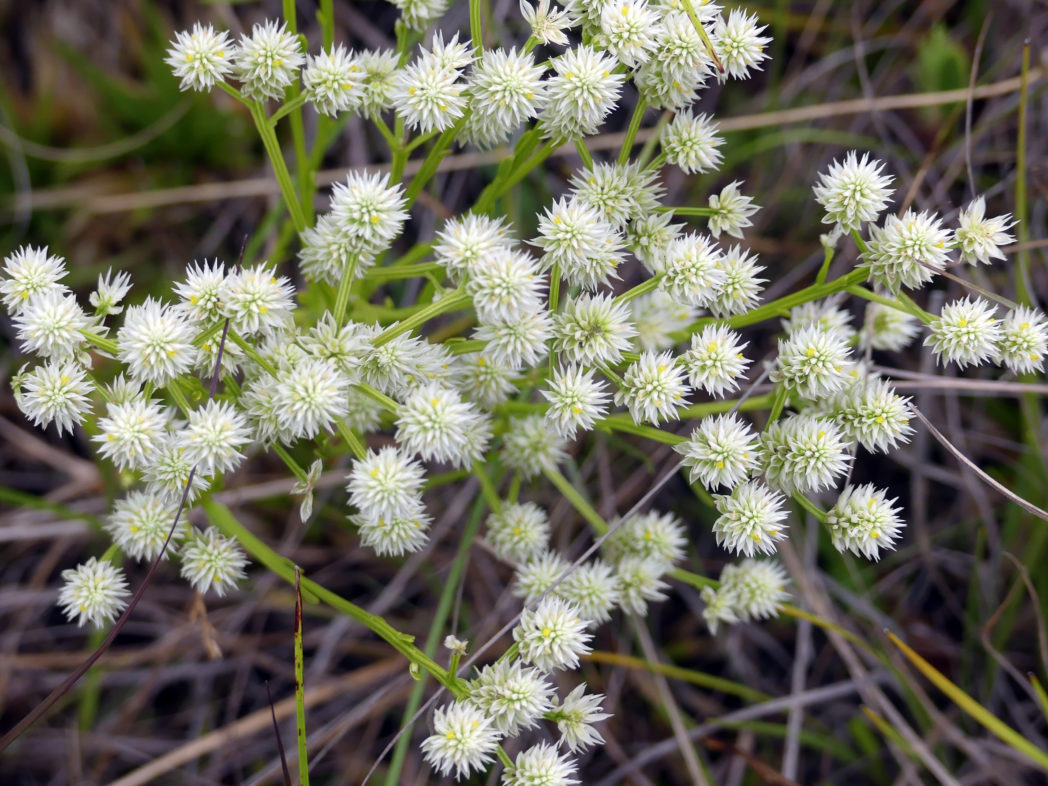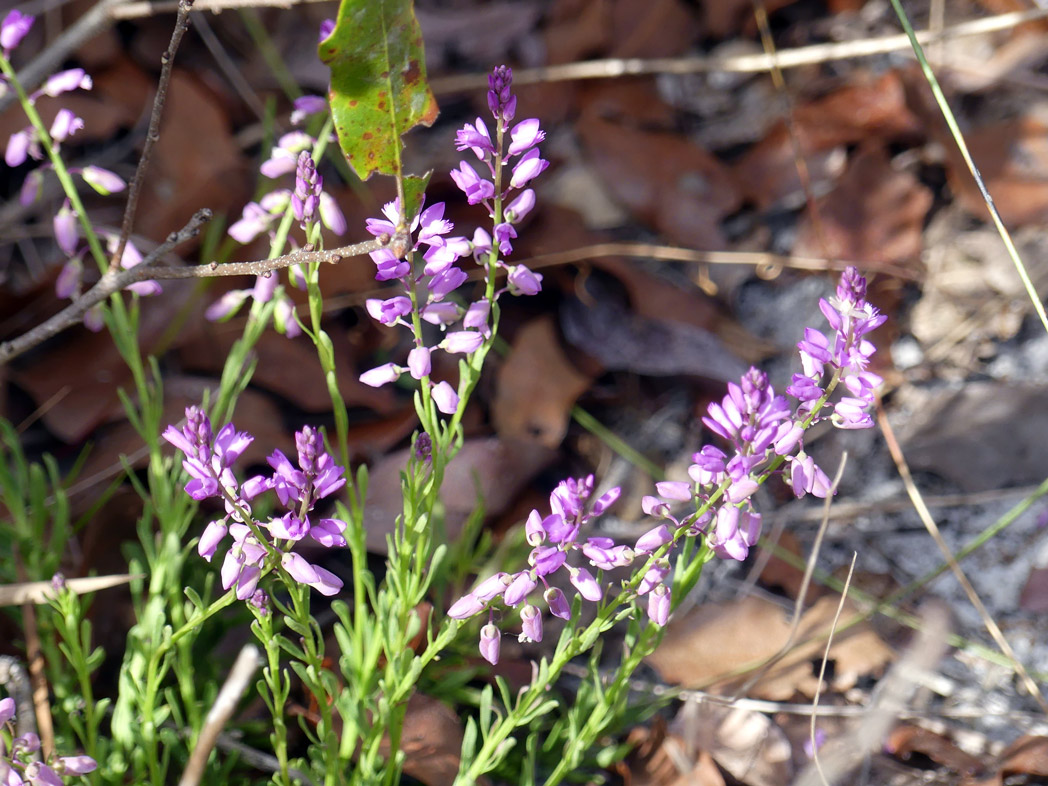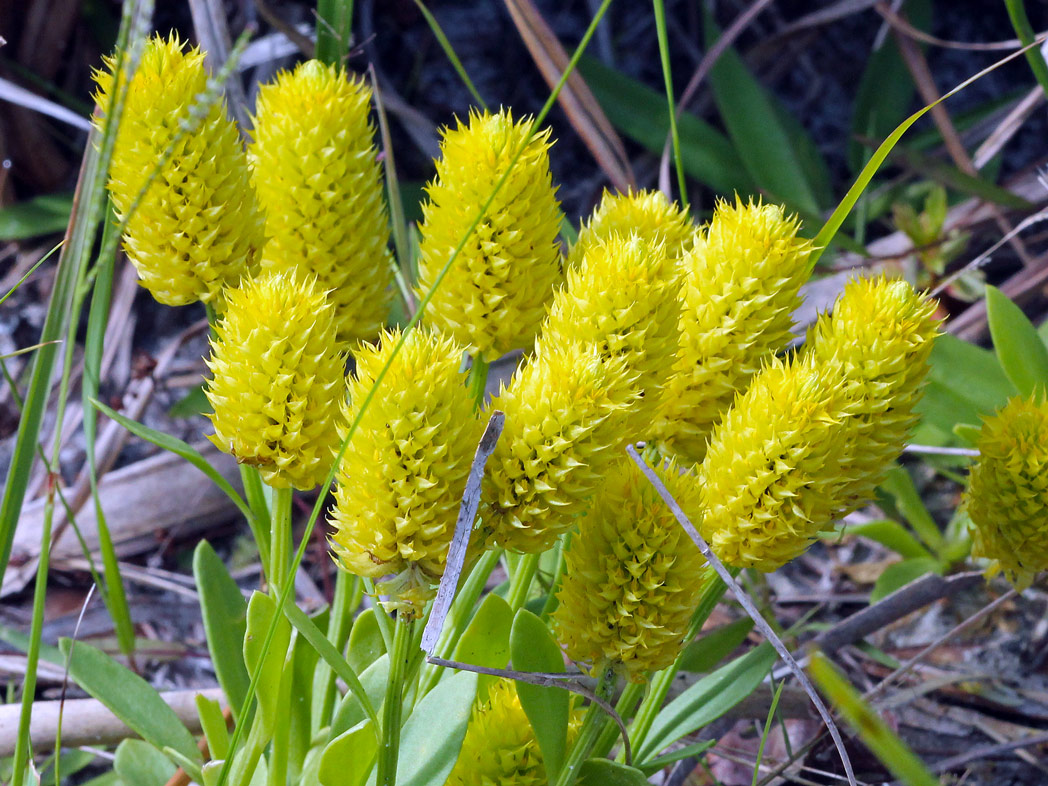Yellow milkwort
Pictured above: Yellow milkwort (Senega rugelii) by John Moran. Click on terms for botanical definitions. View post as a PDF.
Also known as Rugel’s milkwort, Yellow milkwort (Senega rugelii) is an annual herbaceous wildflower endemic to the Florida peninsula. It occurs naturally in wet pine flatwoods and savannas, and along marsh edges. When not flowering, the plant is easily overlooked. But when it blooms, its charming golden flowers light up the landscape! They typically bloom in summer and fall (but have been known to bloom throughout the year) and are especially conspicuous in areas that were recently burned. A variety of small pollinators frequent the flowers for nectar and pollen. Yellow milkwort seeds are spread almost exclusively by ants. The seeds contain elaisomes — fleshy, oil- and protein-rich structures. Ants collect the seeds and take them to their nest where they and their larva consume the elaisomes, but leave the seed intact. The seeds are then tossed from the nest into favorable germinating conditions.
Yellow milkwort’s showy flowers are bright yellow and born in compact, thimble-shaped clusters. They are solitary and have large, lateral sepals. Leaves are alternately arranged and have smooth margins. Upper leaves are small and lanceolate; lower leaves are large, obovate to spatulate, and appear as a basal rosette. Seeds are born in capsules.
The species epithet, rugelii, refers to the German-born botanist and pharmacist, Ferdinand Rugel (1806-1879), who collected and named many plants throughout the southern Appalachian mountains, Florida and Cuba.
Yellow milkwort was historically used by Native Americans, especially Seminole Indians, as an anti-rheumatic, for heart and blood conditions, as a respiratory aid, and as a remedy for snake bites.
NOTE: Research published in 2023 assigned the New World clade of Polygala to the genus Senega (Pastore et al). This species was previously known as Polygala rugelii and is likely still listed as such in many online and print resources.
Family: Polygalaceae (Milkwort family)
Native range: Peninsular Florida from Lafayette to Miami-Dade County, excluding Monroe
To see where natural populations of Yellow milkwort have been vouchered, visit www.florida.plantatlas.usf.edu.
Lifespan: Annual, occasionally biennial
Soil: Moist to inundated soils
Exposure: Full sun
Growth habit: 1–3’ tall
Yellow milkwort is not commercially available. Visit a natural area to see it.
For information on other Senega species, see these resources:

